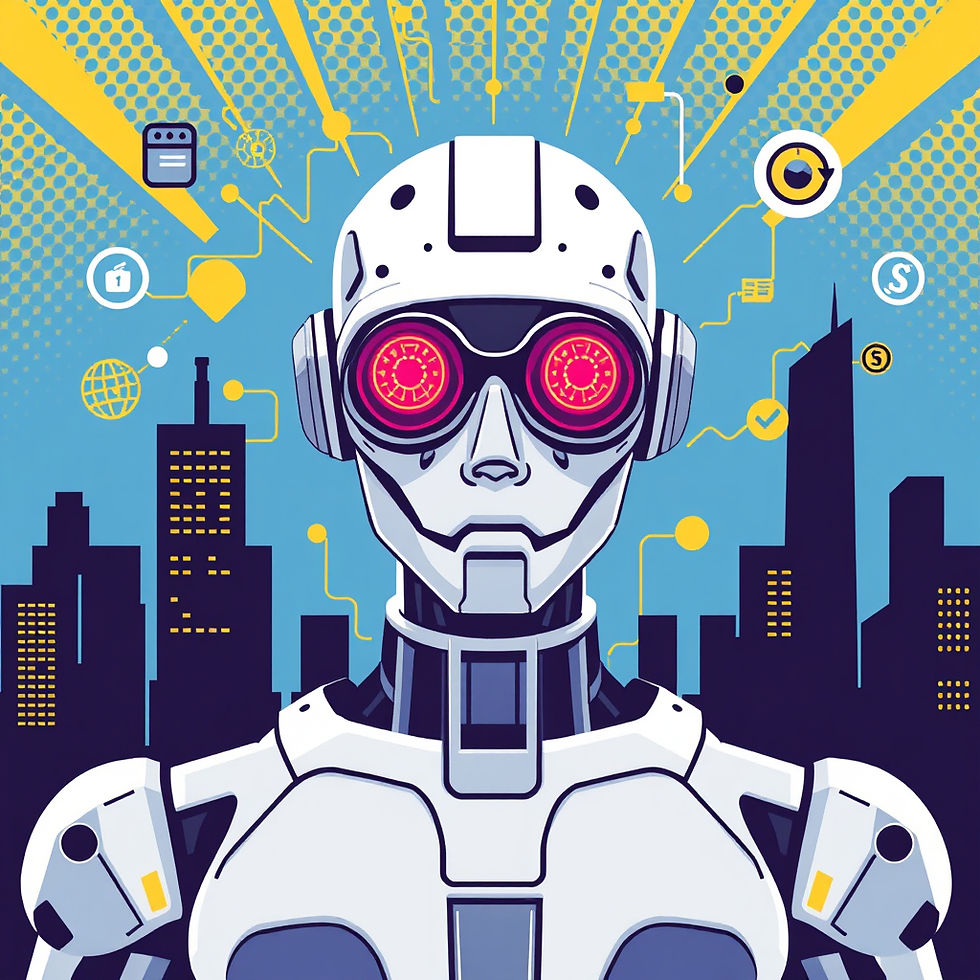The AI Energy Crunch – Power, Water, and Politics
- Founder and Owner - J L
- Sep 11
- 3 min read

Artificial Intelligence (AI) is no longer confined to research labs and sci-fi movies—it now powers everything from personalized recommendations on Netflix to complex business forecasting in global enterprises. But as AI technology accelerates, so too does its demand for resources. This has triggered what experts call the AI Energy Crunch: a mounting strain on power grids, water supplies, and political systems that must adapt to the pressures of digital transformation.
In this chapter of AI is the Future, we explore how AI is reshaping energy consumption, why water usage is becoming a global flashpoint, and the political debates unfolding around these challenges.
The Hidden Energy Behind Artificial Intelligence
At the heart of modern AI lies data centers—giant server farms housing thousands of high-performance machines. These facilities run around the clock to train advanced models like GPT and power real-time applications used by billions.
Electricity demands are skyrocketing. AI training runs can consume as much energy as a small city, and projections show global data center electricity use could rise 160% by 2030.
Cooling requirements double the problem. AI servers generate massive heat, requiring complex cooling systems that place additional stress on local utilities.
For example, Google’s data centers in Iowa already use hundreds of megawatts of power daily—enough to power hundreds of thousands of homes. The scale of energy draw is leading some governments to halt or delay new data center approvals until infrastructure can catch up.
Water: The Silent Casualty of AI Expansion
Cooling trade-offs extend beyond electricity. Many data centers use evaporative cooling, a method that consumes millions of gallons of water annually.
Microsoft’s Arizona facilities reportedly used over 1 billion gallons of water in a single year to cool servers.
In Oregon, local communities protested when Intel’s water usage surged during summer droughts, forcing residents to ration supplies.
As climate change intensifies and drought conditions worsen, the tug-of-war between tech innovation and community sustainability grows sharper. Policymakers are being asked to choose between short-term economic incentives and long-term ecological preservation.
The Politics of Power and Progress
This energy-water dilemma isn’t just technical—it’s political. Decisions about data center placement, subsidies, and grid expansion ripple through communities.
Economic Growth vs. Environmental Risk: Tech giants argue that new data centers bring jobs, innovation, and tax revenue. Critics counter that these benefits are outweighed by environmental damage and rising utility bills.
Who pays the price? Ratepayers and taxpayers often shoulder the costs of subsidies, while corporations profit. Without transparency, local residents may face higher electricity bills and shrinking water access.
Global inequity: Developing countries with fragile infrastructure may be hit hardest, while wealthier nations grapple with balancing AI leadership and sustainability.
Can We Avoid the AI Energy Crisis?
The International Energy Agency (IEA) warns that AI-related activities could soon account for 10% of global electricity consumption, threatening climate goals. The key to avoiding catastrophe lies in innovation, efficiency, and governance.
Smarter AI models: Researchers must prioritize energy-efficient algorithms.
Green data centers: Investments in renewable energy, from wind farms to solar arrays, can offset AI’s carbon footprint.
Next-gen cooling: Liquid immersion cooling and advanced airflow designs can reduce water use dramatically.
Responsible policies: Governments must regulate where and how data centers are built, ensuring equitable resource allocation and ecological protection.
AI’s Bright Future—If We Balance Innovation with Sustainability
AI promises extraordinary breakthroughs: early disease detection, smarter cities, precision agriculture, and breakthroughs in climate modeling itself. But none of these benefits will matter if the infrastructure supporting AI destroys the very ecosystems we depend on.
The AI Energy Crunch is both a warning and an opportunity. By rethinking how we power technology—through renewable energy, efficient algorithms, and responsible policymaking—we can create a future where innovation and sustainability work hand in hand.
Why WinningTeamAI is Leading the Way
, the vision is clear: technology should not only empower businesses but also promote sustainability and fairness. WinningTeamAI is building next-generation AI assistants and SaaS solutions that help companies grow smarter without unnecessary waste of resources.
Whether you’re a business coach, project manager, or entrepreneur, their tools are designed to:
Streamline decision-making with AI-powered insights.
Reduce inefficiencies that drive up costs (and energy use).
Support sustainable scaling for teams, startups, and enterprises alike.
If the AI revolution is to succeed long term, it must be guided by leaders who understand both innovation and responsibility. WinningTeamAI embodies that mission—helping businesses thrive while keeping one eye firmly on the future of our planet.
🔥 The AI Energy Crunch is real—but with the right visionaries, the future can be both high-tech and sustainable. Explore how WinningTeamAI is making that future possible at www.winningteamai.com
.







Comments